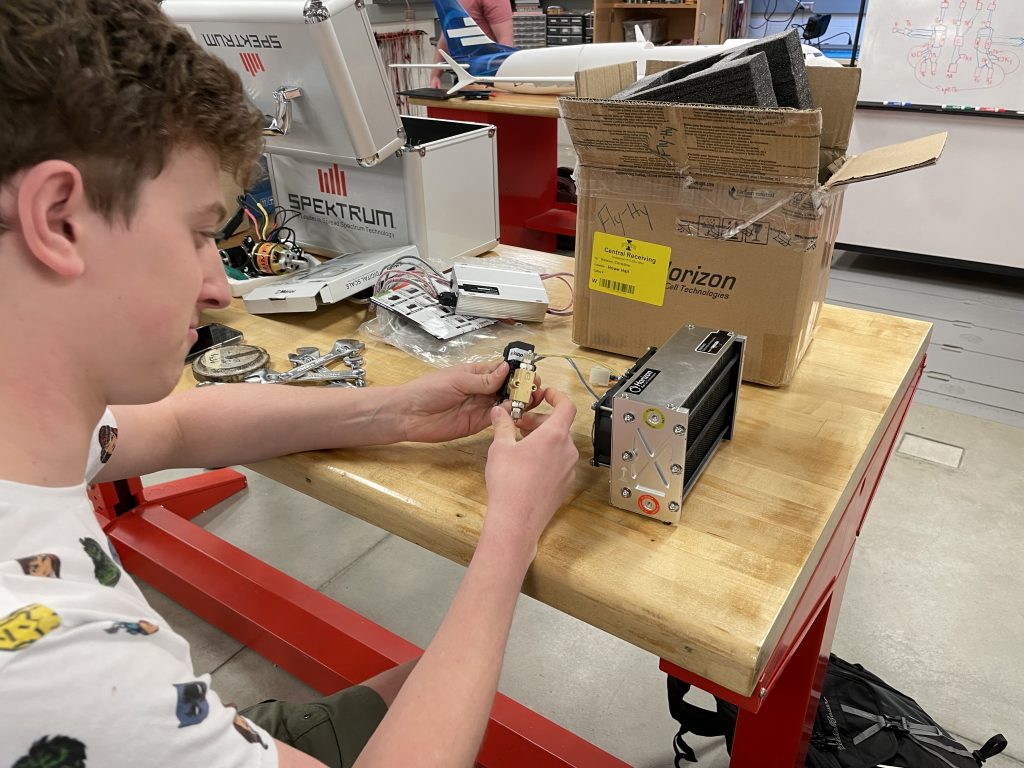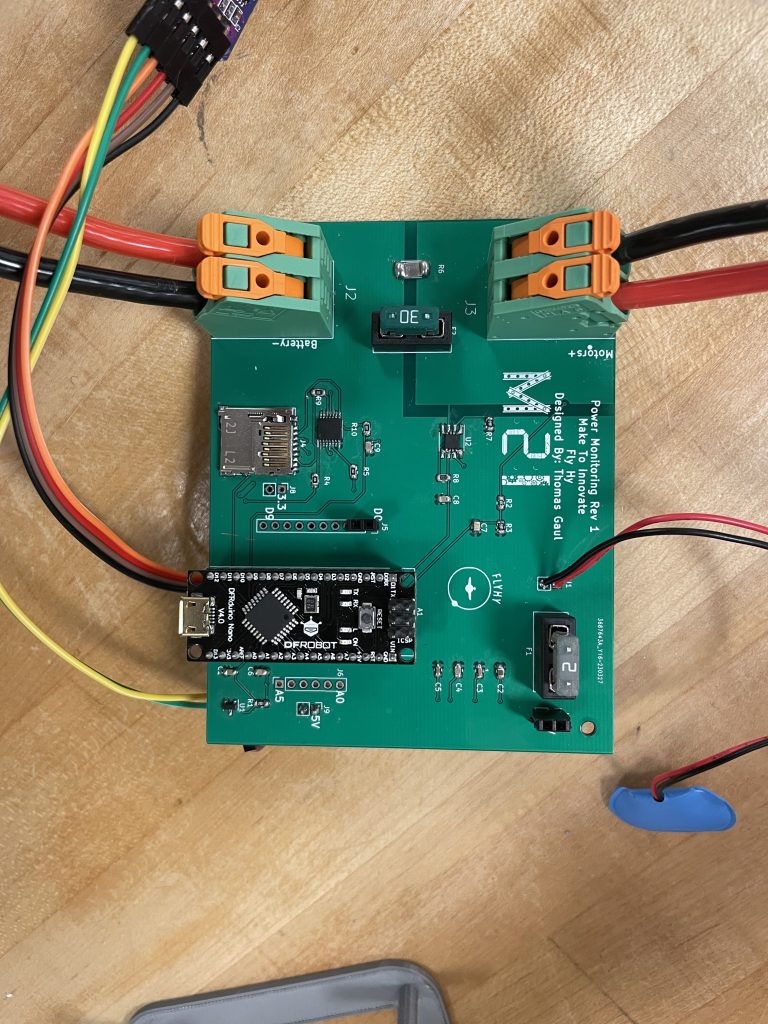Spring 2023
This semester the team made a lot of progress towards our project goal of flying the model aircraft with the hydrogen fuel cell.
One of the major accomplishments that the Integration Team was able to accomplish this semester is that we were able to order the 200W fuel cell and start understanding how the fuel cell system works. With the fuel cell we also acquired a fuel cell system controller as well as software to interface with the fuel cell, this software allows us to monitor properties of the fuel cell such as the output voltage, current, temperature and even limit the amount of hydrogen going into the fuel cell. The fuel cell is shown in the picture below.

Another major step that we have developed is a mechanism to allow for the front and back sections of the aircraft to be able to come apart and be put back together. This is an important mechanism as it allows for accessing the fuel cell which will be in the aft section of the aircraft. The model aircraft’s electronics have been configured and corrected, it has been tested on the ground and a flight test will be performed on April 24.
Switching teams now we’ll talk about the Systems Team, which was in charge of all the software and electronics requirements of the system. The first accomplishment was the creation of the power monitoring system, this system was created to record the power usage as the model flies. This system will be used to figure out the capacity of hydrogen needed on the aircraft to significantly extend it’s duration.

Some key takeaways from this semester:
- The power system on the aircraft requires a power relay system. This system will be tasked with taking the fluctuating power output from the fuel cell and turning it into a stable 22.2 V power output that can be used by all the electronics on the aircraft.
- To refuel the hydrogen we need to use a pressure regulator that can output 300 PSI, something the M2I lab currently doesn’t have.
Fall 2022

- This is the Boeing 737 model we will be flying. The fuel cell will be between the wings, and the storage will be in the back of the fuselage and the battery up front. We plan to sand down the interior of the fuselage to get the fuel cell to fit.

- This is a small 12V fuel cell that M2I has. We were able to learn a lot about fuel cells from this. We were unable to get the ability to refill hydrogen. Because of this we were unable to do testing but we have a SOP decided on of how it will get refilled and tested.